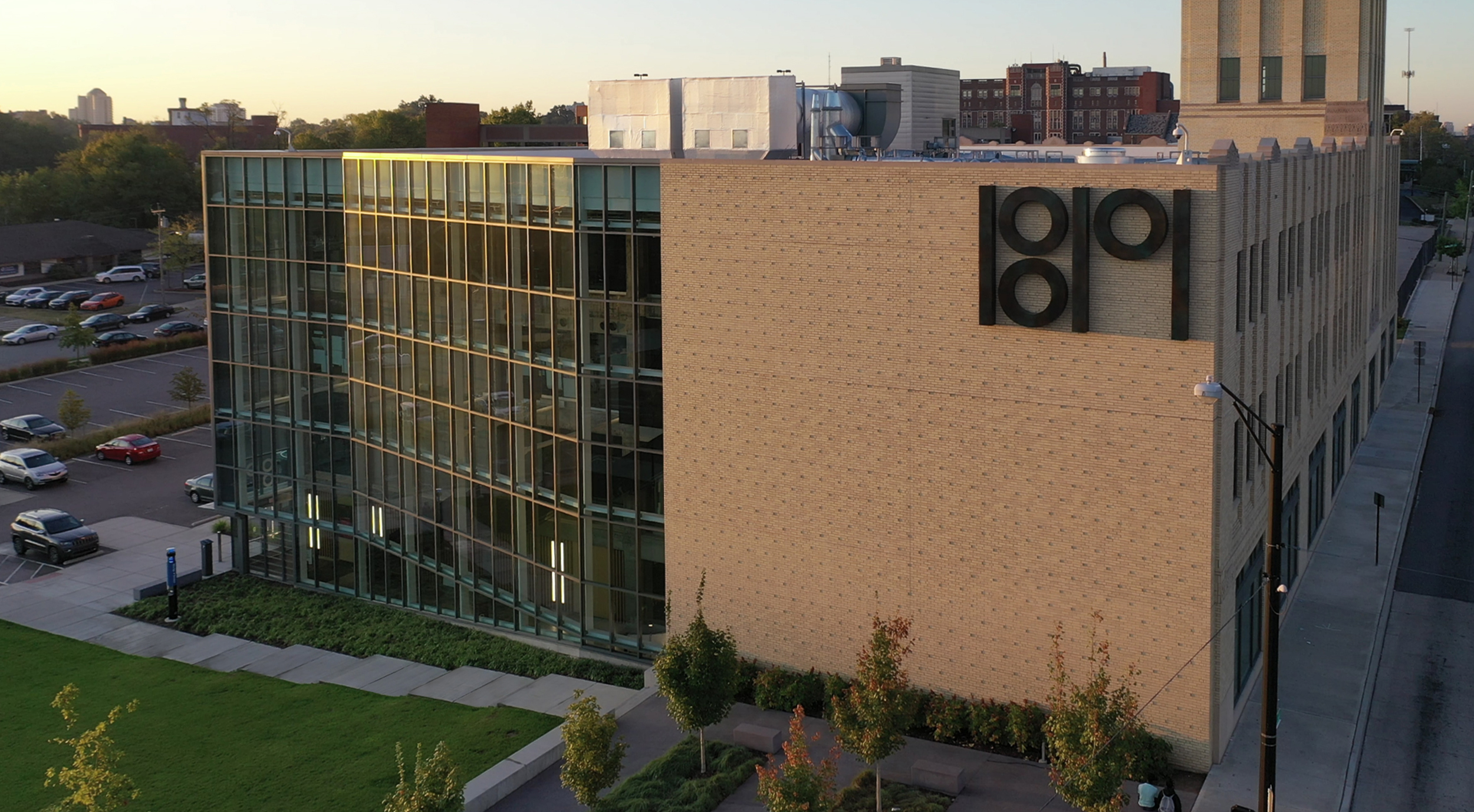
Cincinnati was nationally recognized in an April report published by the Brookings Institution for its efforts to advance inclusive economic growth.
The new study, Institutionalizing inclusive growth: Rewiring systems to rebuild local economies, was designed to understand public, private, and civic efforts to build inclusive local economies in Heartland cities. These efforts are called “systems rewiring” because they create new connections (i.e., wires) between organizations—and between organizations and the communities they support—to more systematically generate inclusive growth. In addition to Cincinnati, the authors of Brookings Metro’s new report also studied Akron, OH, Birmingham, AL, St. Paul, MN and Syracuse NY, arguing that “older industrial cities are critical—yet overlooked—bellwethers for the nation’s economic prosperity and social stability.”
In Cincinnati, Brookings Metro profiled a range of organizations working to catalyze quality job growth and business creation, invest in inclusive talent development, and support connected, vibrant neighborhoods. Examples include: the University of Cincinnati’s major investments in inclusive innovation and entrepreneurship via the Cincinnati Innovation District (CID); investment in underrepresented entrepreneurs operating promising tech-driven companies through Lightship Foundation and Mortar; 3CDC, a long-running effort to invest in downtown and the Over-the-Rhine neighborhood; and how a new approach at the Cincinnati USA Regional Chamber is improving job quality and talent through both the Workforce Innovation Center and the Minority Business Accelerator.
The University of Cincinnati powered an entire innovation ecosystem by developing the CID – now the model for the state. By building the place and connecting companies to talent, the CID’s interconnected platform for industry, researchers and students has been integral in the rewiring of the system through its own evolution.
“Universities are in a unique position to bring together multiple constituents to solve challenges and seize opportunities in new and unexpected ways,” said University of Cincinnati President Neville G. Pinto. “Having a dedicated innovation district enables us to do that; it’s a space where these collisions can occur.”
Adds David J. Adams, University of Cincinnati Chief Innovation Officer and Executive Director, CID, “Place matters. The district itself is living proof of how close proximity and access to industry and innovation centers can improve the economic outlook and create new jobs.”
Lightship Foundation, a non-profit foundation focused on providing tech entrepreneurs of color with meaningful guidance and funding, brings minority business leaders and creatives from all over the world to make Ohio the place where ideas are born and can thrive in the long term.
“We couldn’t have done this anywhere else,” said Candice Matthews Brackeen, Founder and CEO of Lightship Foundation. “Our partnership with the CID along with the presence of organizations like Mortar and the Chamber’s Minority Business Accelerator are addressing the gap in resources for founders of color. Lightship is proud to be at the forefront of Cincinnati’s inclusion focused growth.”
The Cincinnati Center City Development Corp. (3CDC), a private, non-profit real estate developer whose mission and strategic focus is to strengthen the core assets of downtown by revitalizing and connecting Cincinnati’s Central Business District and Over-the-Rhine neighborhood, has played a direct role in more than $1.6 billion in development projects in these two neighborhoods. This investment has yielded 198 buildings restored, 49 new buildings constructed, 17 acres of restored civic space, and two civic buildings restored, among other accomplishments.
“3CDC’s commitment to creating an inclusive local economy can be seen through its work developing affordable and supportive housing, working with minority- and woman-owned contractors on our development projects, and filling our street-level commercial spaces with minority- and woman-owned small businesses,” Adam Gelter, Executive Vice President of Real Estate for 3CDC, said. “We’re fortunate to be able to collaborate with so many great organizations in Cincinnati to make these important initiatives a reality.”
The Cincinnati Regional Chamber has implemented effective initiatives to advance inclusion, including Apprenti Cincinnati, which encourages local businesses to adopt new pipelines for untapped talent; the Workforce Innovation Center, which creates tailored plans to help companies adopt inclusive and effective practices; and the Minority Business Accelerator, which works to grow, build, attract, and create minority-owned enterprises in the region.
“Great things are happening here in the region, and the Minority Business Accelerator looks forward to continuing to do its part to advance the collective business and economic interest of the community,” said Darrin Redus, Chief Executive Officer, Minority Business Accelerator. “While there’s much more work to be done to address ongoing economic disparities in the region, I believe this report exemplifies our strong foundation, great progress, and shared desire to create an inclusive economy that works for all of its citizens.”
Audrey Treasure, Executive Director, Workforce Innovation Center, agrees. “This report demonstrates that the Cincinnati region is leading the way as a community dedicated to improving the economy for all people. The Workforce Innovation Center continues to help employers solve their most pressing talent issues with inclusive practices that work for their business and support their employees. The more employers adopt this approach, the more it puts Cincinnati on the map as a hub for inclusive capitalism.”
Inclusive growth is a matter of civic and economic necessity and collaboration among a variety of institutions with a shared purpose is required to generate positive outcomes. “Every sector can contribute to systems rewiring,” argues Brookings Metro Fellow and Director of Applied Research Joseph Parilla. “Now, armed with a once-in-a-generation infusion of federal dollars, local leaders can use this playbook to build the institutional and systemic capacity to ensure their economies are working for all.”
About the Cincinnati Innovation District®
The Cincinnati Innovation District® is a unique and thriving ecosystem that attracts, produces, retains and develops talent by co-locating and collaborating with organizations. Unveiled in 2020 by Ohio Governor Mike DeWine and Lt. Governor Jon Husted along with JobsOhio and innovation district leadership, the district envelops myriad innovation assets and access to some of the world’s leading academic and research centers, organizations and talent pools. Powered by the University of Cincinnati, the CID includes the world-renowned Cincinnati Children’s Hospital Medical Center and other national research centers. The district’s mission is to become a globally recognized talent hub and lead a transformational movement. The combination of industry engagement, unique experiential platforms and accessible research expertise — working at the pace of change — will become a model nationwide. For more information on the Cincinnati Innovation District, visit www.cincyid.com.
About Lightship Foundation
Lightship Foundation is an impact-driven organization serving remarkable entrepreneurs & ecosystems. We leverage corporate partnerships, specialized programming, and capital investments to drive growth within the minority innovation economy. Since 2017, Lightship Foundation has guided over 200 companies led by women, FOC (Founders of Color), and those representing the LGBTIQ and disabled communities to more than $120M in venture funding across the US. Connect with Lightship Foundation on LinkedIn and visit the Lightship Foundation website to learn more.
About the Cincinnati USA Regional Chamber:
The Cincinnati USA Regional Chamber’s mission is to grow the vibrancy and economic prosperity of the Cincinnati region. The Chamber team is working on behalf of member businesses to ignite business resiliency and inclusive growth, to invest in the people who call this region home, to lead regional connectivity through collaboration, and to champion the region’s unique advantages. The Chamber is powered by inclusion, regional thinking, data, policy, and relationships. The Cincinnati Chamber’s vision is that the region embodies the Future City, where business growth delivers the economic platform that accelerates opportunity for everyone who calls this region home. For more information, visit www.cincinnatichamber.com.
About 3CDC
The Cincinnati Center City Development Corp. (3CDC) is a private, non-profit full-service real estate developer with a mission and strategic focus to strengthen the core assets of Downtown Cincinnati in partnership with the City of Cincinnati and the Cincinnati corporate community. Its work is specifically focused on revitalizing and connecting the Central Business District and Over-the-Rhine. For more information, visit http://www.3cdc.org.







